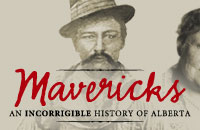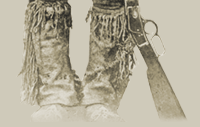|

[ Project Plans | Essential
Questions | Knowledge Hunt | Glossary | Links ]
Artifacts From Our Future Mavericks
Examining Personal Objects as to How Future Historians May Examine
Our Life and Times
Introduction
Students need to understand that historical thinking is a process
whereby students are challenged to rethink assumptions about the
past and to re-imagine both the present and the future. Historical
thinking allows students to develop a sense of time and place to
help define their identities. It helps students to approach issues
with an inquiring mind and exercise sound judgment when presented
with new information or a new perspective. What is a primary historical
source? How do historians examine primary historical sources? How
will I be remembered in the future? How do I want to be remembered?
Project Explanation
In this project, students will develop an appreciation of critical
and creative thinking as they undertake the historical process of
examining personal "primary historical sources". They
will bring to school objects, photos, documents or even maps that
have a great deal of significance for them or their families. They
will then approach their objects in the same manner a Glenbow museum
historian would by conducting an object-based inquiry.
Alberta Social Studies Curriculum Unit Connections
Grade Four - Alberta: The Land, Histories and Stories
4.2 The Stories, Histories and People of Alberta
4.S.2 develop skills of historical thinking
Grade Five - Canada: The Land, Histories and Stories
5.2 Histories and Stories of Ways of Life in Canada
5.S.2 develop skills of historical thinking
Grade Six
6.S.2 develop skills of historical thinking
Grade Seven
7.S.2 develop skills of historical thinking
Materials and Resources Needed
Procedures
Students will undertake an object-based inquiry approach based
on the scenario that they are historians from 2105 (Alberta's
Bi-Centennial) examining primary historical sources left behind
by the students in our time period. What will be an artifact / photograph
/ document / map that would show important aspects about you as
a future Alberta Maverick? What would you like to see on display
at the Glenbow for future students to see? Why will you be the next
Alberta Maverick? What will you accomplish in your lifetime?
A few days before you would like to begin the project, ask students
to bring in an object (or a few) that is very important to their
family or to themselves and tells a great deal about who they are
as a person. It may be an artifact, a photograph, a document, or
even a map.
To introduce the project, introduce Eric Harvey, the man who established
the Glenbow museum in Calgary, by using the Mavericks: An Incorrigible
History of Alberta site. Why would he act in such a generous
manner for the people of Calgary and Alberta? Why would we want
to have "collections" of old letters, diaries, and objects
in a museum? How would Calgary be different if we did not have the
Glenbow museum? The Calgary Zoo? Heritage Park?
Primary sources are materials that view history from a first-hand,
up-close perspective. A diary of a person's life that tells
their accomplishments, activities, events and feelings is a "primary
historical source", whereas a book written by another author
that describes their life is referred to as a "secondary historical
source". Primary sources can include artifacts such as clothing,
tools, weapons, art, pottery, cookware, and other implements. They
can be written documents such as letters, diaries, newspaper articles,
poetry, and memos. They can also be oral family stories, anecdotes,
or interviews, as well as images such as photographs, artworks,
and video. Primary sources are often very personal to the historical
figure, and may have been mementos, keepsakes, and even family heirlooms
that have been passed down from generation to generation. They may
also be practical objects that were important to the person for
day-to-day life, such as a special tool. These primary sources can
reveal a great deal about the historical figure, their day-to-day
life, their accomplishments, their thoughts, values, and feelings,
and even about their culture or society in general. Students will
examine the primary sources, asking themselves "Why was this
worth saving?" and "What does it tell us?"
In pairs or small groups, the students will use the "primary
sources" they have brought to work through the "Primary
Sources Inquiry Process Questions" that pertain to that primary
source. The questions are included in the following links:
- Artifact-Based Inquiry
Examination of primary resource artifacts using journaling and
questioning strategies
- Photograph-Based Inquiry
Examination of primary resource photographs using journaling and
questioning strategies
- Document-Based Inquiry
Examination of primary resource documents using journaling and
questioning strategies
- Map-Based Inquiry
Examination of historical maps using journaling and questioning
strategies
As a large group, use some of the following questions in a discussion
to allow students to synthesize some of their thinking around their
primary historical sources.
- Many primary historical sources did not survive from Alberta's
history. Why do you think this is so?
- Why do you think your primary historical source survived?
- Would you have saved the same objects as the other students?
Why or why not?
- What personal story/memory does it remind the owner of?
- What personal story/memory does it remind other students of?
- How does knowing the "historical context" of the
primary historical source affect your appreciation of this artifact?
Student artifacts and artifact inquiries could be displayed in
a similar fashion to a museum display. They would write a short
biography of themselves and create a "tombstone" for
the object that includes the name of the object, a description,
date(s), and a transcription of any text.
Assessment and Evaluation
- In groups or as a class, students may conference and debrief
each other after they have presented their projects. Students
should be encouraged to share their personal reflections about
how it felt to speak in front of their audience.
- Students may use their rubric as a guide for writing a self-assessment
of their project work. They will determine their level for each
of the categories and use the criteria specified in their rubric
to justify them.
- A project journal may be used for information gathering as well
as for reflective writing as the process is taking place. Students
can pose questions, vent frustrations, synthesize their work,
examine their process, and even wonder about what they are missing
or what is still needed for their project. This may be completed
as a group or individually.
Ideas for Enriching this Project
- Students can ask parents or family members for an artifact that
is extremely special to them. Students can examine what this would
tell about the owner by using the object-based inquiry processes
and compare that study to the real "historical figure. This
could even lead into an interview of the person about why that
primary historical source has significance for them.
- Have the students select and compare another type of primary
historical source that is different from their own. Compare what
each reveals as a primary historical source. Do they reveal different
things?
 |



![]()
